Norway
Transport, Infrastructure and Building
Vulnerabilities - Building
A report of 2006 states that the process of climate change adaptation has so far received little attention in Norway (1). The report also states that maladaptations are likely to occur if national adaptation measures are not developed in consideration of local conditions, including an understanding of the processes that shape vulnerability at the local level.
The building sector is experiencing a loss of, or disregard for, traditional building techniques. During a severe storm in western Norway in 1992, most of the damages were caused to new buildings, whereas almost all old buildings survived with minor damages. Despite the existence of locally adapted knowledge regarding construction methods as well as, arguably, new technology and knowledge, housing structures are becoming less robust in the face of extreme events (1).
The changing climate has the potential regionally to increase premature deterioration and weathering impacts on the built environment, exacerbating vulnerabilities to climate extremes and disasters and negatively impacting the expected and useful life spans of structures (7).
Vulnerabilities – Transport – Road
Using the impacts of current climate variability on road transport as an analog, the economic impacts of extreme weather events on goods transport has been estimated (3). For example, heavy snowfall in northern Norway in the winter of 1997 imposed an estimated additional cost of NOK 23.9 million on the transport sector. These large costs were absorbed by transport companies, rather than the producers of goods or export products. Increases in the frequency or magnitude of extreme weather events may amplify these costs and potentially exceed the capacity of both transport companies and state authorities to cope with climate extremes.
Changes in the permafrost and in the frequency, intensity and magnitude of storms, landslides, avalanches and floods, as well as changes in precipitation and sea and air temperature – expected to occur across the Arctic – could have serious repercussions for infrastructure in northern Norway, in particular infrastructure that is located along the coastline (4).
Climate change will likely affect the construction and transportation sectors, including the share of employment, in both positive and negative ways. Changes in climate, and in particular, in the frequency and intensity of extreme weather events such as storms, floods and landslides, are likely to threaten infrastructure, including roads, bridges, tunnels and homes, along the coast, as well as inland, in Norway’s northern regions. Accelerated sea level rise will also pose challenges to the extensive system of coastal infrastructure upon which many northern coastal communities depend (5). More frequent and extreme weather events that require temporary closure, or that cause damages or delays to major transportation routes could have large negative economic impacts for the transportation sector (4).
Number of days with 0 °C crossings
The number of days a year that the temperature changes from above to below zero (and vice versa) is called the number of days with 0 °C crossings. This number has a strong impact on the number of days with icing on the roads of Norway, and hence on the costs of winter road maintenance. In the period 1971-2016 this number has increased in Norway in cold seasons and cold regions, and decreased in mild seasons and regions. This trend will continue this century, climate model projections indicate. Both under a medium (RCP4.5) and high-end scenario of climate change (RCP8.5), more frequent icing is expected in Finnmark, the northernmost part of Norway, by 2071-2100 and less frequent icing in coastal and lowland regions (15).
Traffic accidents involving personal injury or death due to slippery conditions account for up to 50% of the over 27,000 injuries in recent years in Finland, Norway and Sweden, and result in annual medical costs and economic production losses up to €16.2 billion yearly (17). Also, pedestrian slip injuries are a major contributor to social costs. The climate change impacts on driving and walking conditions in Finland, Norway and Sweden have been assessed for a worst-case climate change scenario (RCP 8.5) for 2050. According to this assessment, snowy and icy road surface conditions strongly decrease during the cold season. In autumn and spring, the number of zero-degree-crossing days decrease, and sidewalks show a decrease in slipperiness. In winter, this number increases, and sidewalks become more slippery (16).
Vulnerabilities – Damages due to permafrost thawing
The thawing of the permafrost in the Arctic is causing damage to the infrastructure and buildings of the Arctic states. According to model projections, the costs of this damage will be $182 billion for all Arctic states combined by mid-century, under a moderate scenario of climate change. Under a high-end scenario of climate change the costs may rise to $276 billion by mid-century. Russia is expected to have the highest burden of costs, ranging from $115 to $169 billion depending on the scenario. For Scandinavia and Iceland, the estimated costs are $36.4 billion (moderate scenario) to $53.9 billion (high-end), while the range for North America is $30.4 - $53.1 billion. These are the mean values for the estimates; the uncertainty range of these costs is tens of percent (18).
In these model projections mid-century is defined as the period 2055–2064, and the damage is compared to the reference period 2015–2024. The results show that under the moderate scenario of climate change 29% of roads, 23% of railroads, and 11% of buildings will be affected by permafrost degradation. Under the high-end scenario, these numbers are 44% of roads, 34% of railroads, and 17% of buildings.
Benefits of climate change - Road maintenance
The municipality of Bergen spends NOK 37 million (or about USD 4.5 million) annually on removing snow and ice during the winter period. Analyses indicate that a 1 °C increase in the mean temperature reduces the winter maintenance costs by NOK 14 million, and that it is likely that there will be no need for winter snow-clearing operations if the long-term mean atmospheric temperature increases by approximately 2.5 °C or more relative to the historical mean temperature level (14).
Benefits of climate change - Navigation in the Arctic
The continuing reduction of sea ice is very likely to lengthen the navigation season and increase marine access to the Arctic’s natural resources (2). Seasonal opening of the Northern Sea Route is likely to make trans-arctic shipping during summer feasible within several decades. Reduced sea ice is likely to allow increased offshore extraction of oil and gas, although increasing ice movements could hinder some operations (and shipping!). Sovereignty, security, and environmental concerns are likely to arise as marine access increases.
Since the 1980s, the extent of older, thicker multiyear ice has decreased by ca 15% per decade, driven especially by reductions in March (declining from ca 75% to 45 %) and September (ca 60 % to ca 15 %) (10).
It is reasonable to conclude that Arctic sea ice loss is very likely to occur in the first rather than the second half of the 21st century, with a possibility of loss within a decade or two. Results have been compared of three recent approaches to predict summer sea- ice loss in the Arctic in the scientific literature: (1) extrapolation of sea ice volume data, (2) assuming several more rapid loss events such as 2007 and 2012, and (3) climate model projections. Time horizons for a nearly sea ice-free summer for these three approaches are roughly 2020 or earlier, 2030 ± 10 years, and 2040 or later (8), even as late as 2100 (11). At present, it is not possible to completely choose one approach over another as all approaches have strengths and weaknesses (8). Trans-Arctic navigation is likely to remain a summertime phenomenon. The Arctic marine environment is likely to be fully or partially ice-covered 6–8 months each year for the first half of the century, and no climate model projects an ice-free Arctic in winter by 2100 (9).
Projections of Arctic marine access
Projections have been made of 21st-century Arctic marine access for the early (2011–2030), mid-(2046–2065), and late-21st century (2080–2099); assuming Polar Class 3 (PC3), Polar Class 6 (PC6), and open-water vessels (OW) with high, medium, and no ice-breaking capability, respectively (12). These projections are based on sea ice simulations for three climatic forcing scenarios (4.5, 6.0, and 8.5 W/m2; defined in IPCC Fifth Assessment Report); these scenarios are roughly correlative to the IPCC SRES scenarios B1, A1B, and A2, respectively (13). The projections are compared with the baseline period 1980–1999. Results suggest substantial areas of the Arctic will become newly accessible to Polar Class 3, Polar Class 6, and open-water vessels, rising from ca 54%, 36%, and 23%, respectively of the circumpolar International Maritime Organization Guidelines Boundary area in the late 20th century to ca 95%, 78%, and 49%, respectively by the late 21st century. Of the five Arctic Ocean coastal states, Russia experiences the greatest percentage access increases to its exclusive economic zone, followed by Greenland/Denmark, Norway, Canada and the U.S (12).
The impact on three potential shipping routes was assessed: Northwest Passage, Northern Sea Route, and Trans-Polar Route. Along the Northern Sea Route, July-October navigation season length averages ca 120, 113, and 103 days for PC3, PC6, and OW vessels, respectively by late-century, with shorter seasons but substantial increases along the Northwest Passage and Trans-Polar Route (12).
Adaptation strategies – Building
Generally speaking, due consideration should be taken of risk and vulnerability aspects in land use management. Moreover, mapping should be carried out of areas that are particularly vulnerable to climate change. Good tools such as flood zone maps and maps of landslide-prone areas are vital to ensure more robust social planning (6).
It is important to identify climate vulnerabilities to be able to plan and implement adapted construction measures. In future building regulation amendments, climate change challenges will provide guidelines for potential revisions. Furthermore, it is important that local authorities and other players in the housing and building sector have access to local climate information, as well as competence on climate-adapted construction work (6).
It is important that the local authorities incorporate climate change considerations into their drainage and water supply plans. It might be necessary to increase the design criteria for the water and drainage systems. One solution to reduce damage to homes and infrastructure in densely populated areas could be to introduce local storm water systems involving surface run-off along natural depressions in the terrain or streams (6).
References
The references below are cited in full in a separate map 'References'. Please click here if you are looking for the full references for Norway.
- O’Brien (2006)
- ACIA (2004)
- Askildsen (2004) in: O’Brien (2006)
- West and Hovelsrud (2008)
- Aunan and Romstad (2008),in: West and Hovelsrud (2008)
- Ministry of the Environment (2009)
- Auld (2008b); Larsen et al. (2008); Stewart et al. (2011), all in: IPCC (2012)
- Overland and Wang (2013)
- ACIA (2004a); Stroeve et al. (2012a), both in: Stephenson et al. (2013)
- Maslanik et al. (2011); Comiso (2012); Polyakov et al. (2012), all in: Stephenson et al. (2013)
- Boe et al. (2009), in: Stephenson et al. (2013)
- Stephenson et al. (2013)
- Van Vuuren et al. (2011); Vavrus et al. (2012), both in: Stephenson et al. (2013)
- Lorentzen (2020)
- Nilsen et al. (2021)
- Freistetter et al. (2022)
- Several sources in: Freistetter et al. (2022)
- Streletskiy et al. (2023)




